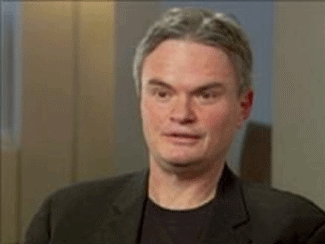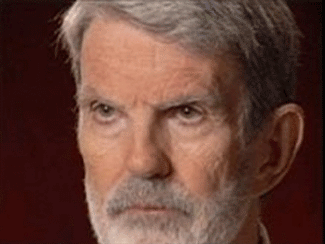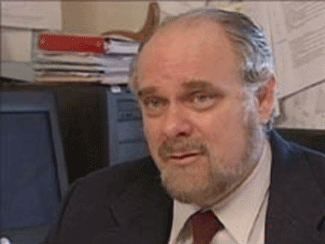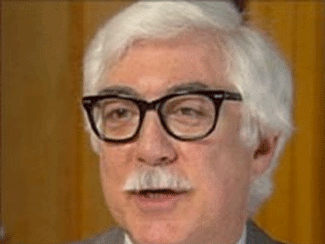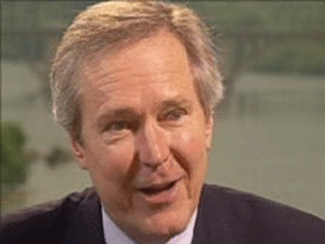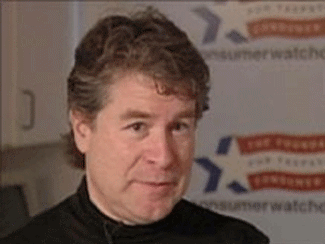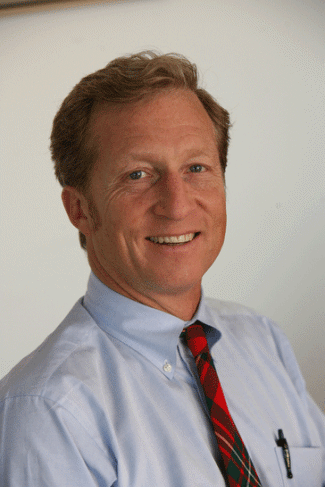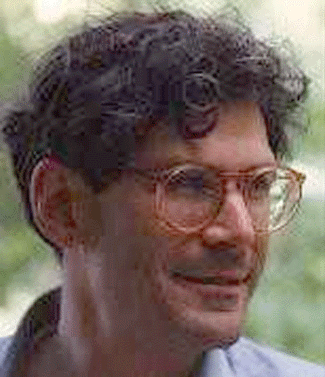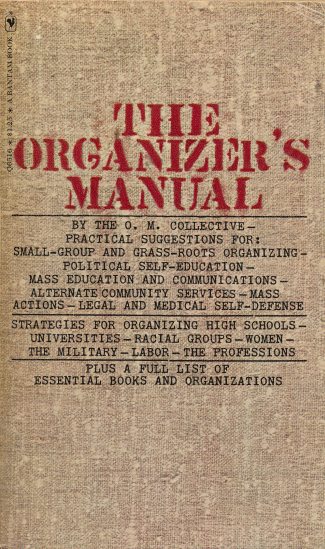By Morton Mintz
September 18, 2005
[email protected]
NOTICE: THIS WORK MAY BE PROTECTED BY COPYRIGHT
YOU ARE REQUIRED TO READ THE COPYRIGHT NOTICE AT THIS LINK BEFORE YOU READ THE FOLLOWING WORK, THAT IS AVAILABLE SOLELY FOR PRIVATE STUDY, SCHOLARSHIP OR RESEARCH PURSUANT TO 17 U.S.C. SECTION 107 AND 108. IN THE EVENT THAT THE LIBRARY DETERMINES THAT UNLAWFUL COPYING OF THIS WORK HAS OCCURRED, THE LIBRARY HAS THE RIGHT TO BLOCK THE I.P. ADDRESS AT WHICH THE UNLAWFUL COPYING APPEARED TO HAVE OCCURRED. THANK YOU FOR RESPECTING THE RIGHTS OF COPYRIGHT OWNERS.
In a talk [by Mintz on Sept. 13, 2005, to the Southeastern Sussex County Democratic Club at Bethany Beach, Del.] Morton Mintz describes what he calls six 'deep-seated, fundamental, and persisting press failings that have enormous impact on our people and our country.'
I came to speak as a journalist, not as a partisan, and that is what I will do.
Let me begin by describing two categories of critics of the mainstream press, as symbolized by, principally, the New York Times and the Washington Post.
One category consists of an army of dirty, rotten scoundrels and crazies. Most are agents of right-wing and Republican causes. For them, most of the time, freedom of the press is a license to agitprop; for their employers, it is a tool to maximize profits.
The scoundrels befoul the word "conservative." They exult without end in equating the word "liberal" with disloyalty, and sometimes treason; and in imputing "liberal bias" to mainstream news organizations—falsely—they sometimes, I suspect, intimidate them.
Their ultimate but unadmitted goal is, I fear, the destruction of nonpartisan journalism that speaks truth to power.
As you've doubtless noted, I've named none of the scoundrels. Might Rush Limbaugh be one? Of course not! If you thought I had him in mind, you must have missed the full-page ad published in Time Magazine last week by an entity calling itself the "Excellence in Broadcasting Network." A photo of "America's Anchorman" dominates it. Stripped across the bottom is a large-type caption that, in capital letters, proclaims: "THE NATION TRUSTS RUSH". I'm a citizen of the nation, right?
I would waste the time of a sophisticated audience were I to dwell on the frauds, liars and lunatics whose idea of a code of ethics is the three-digit number on the back of their credit cards. Instead, my focus will be on the second category. It consists of critics—myself emphatically included—who believe, as Bill Moyers put it last month, "that the quality of journalism and the quality of democracy are inseparable." That's why we applaud and cheer the many quality acts of superb, courageous journalism and investigative reporting done by the mainstream press at home and in dangerous places abroad.
Three very brief examples: In the New Orleans Times-Picayune, the powerful series warning that it was not whether, but when an utterly ruinous hurricane would strike. In the Times, David Barstow's and Lowell Bergman's terrific investigative reporting on the brutal safety and environmental crimes of McWane Inc., the Alabama-based pipe manufacturer. In the Washington Post, Anthony Shadid's brave, brilliant and insightful reporting from Iraq.
The need to improve mainstream journalism
But, in an effort that seems Sisyphean at times, we also criticize this same press, compulsively, constantly, and vigorously. Our goal is the polar opposite of the goal of the scoundrels. It is to improve mainstream journalism. The better mainstream journalism is, the better served is democracy, and the better its ability to withstand and discredit unscrupulous assaults.
It is in this context that I will identify a half-dozen of what I see as deep-seated, fundamental, and persisting press failings that have enormous impact on our people and our country, but that are mostly under the public's radar. Indeed, these failings are seldom discussed by journalists.
FAILING ONE: Right-wing commentators have become extraordinarily powerful influences on our politics, our governance, our society, and our future. They were indispensable to George W. Bush as a candidate and are bulwarks of his presidency and his party. In significant degree, I believe, they have become so influential precisely because in the name of informing the public, they routinely deceive, distort, mislead, and outright lie. Their pollution of civil discourse has been documented by David Brock in his book The Republican Noise Machine, and by Fairness and Accuracy in Reporting, among others. Indeed, the invaluable MediaMatters.org documents and archives their wretched conduct every weekday.
It is because the scoundrels exert vast power that mainstream news organizations are duty-bound to monitor what they say and do. To be sure, the scoundrels do get occasional hits: Think Frank Rich in the Times. In my view, however, commentary, no matter how much supplemented by MediaMatters, bloggers, and others, is neither a sufficient response nor a good excuse for the enduring failure of the Times, Post, and others to do in-depth, fair-minded, and sustained journalism about this gang. I'm talking about reporting, not invective. I have in mind, for example, careful journalism comparing actual facts with what are alleged to be facts in the torrential outpourings of Rush Limbaugh, Bill O'Reilly, Sean Hannity, Michael Savage, and Ann Coulter, among many others.
FAILURE TWO: News organizations that have and enforce high ethical standards for their news staffs have low or non-existent and unenforced ethical standards for their commentators. They do unto reporters what they do not do unto pundits. This rarely discussed double-standard is deeply embedded at the Wall Street Journal.
Over a period of years, a former Journal op-ed legal-affairs pundit, L. Gordon Crovitz, falsely quoted court opinions and wrapped quotes around statements that, he would have had his readers believe, came from the opinions, but in fact did not. Stuart Taylor documented a long list of such ethical atrocities in The American Lawyer in 1989. Dow Jones didn't fire Crovitz; it gave him an important assignment in Asia.
A Journal editorial-page editor, John Fund, "has doubled as a member of the Speaker's Advisory Group, a small cluster of [Newt] Gingrich's close advisers. Fund nearly left the Journal a few months ago to become Gingrich's chief spokesman." Jacob Weisberg wrote those sentences in Slate in 1996. In The Hunting of the President, Joe Conason and Gene Lyons document that Fund and fellow Journal editorial writer Micah Morrison were in Arkansas as active co-conspirators in Richard Mellon Scaife's Arkansas project to destroy Bill Clinton. Fund and Morrison continue to editorialize. It is all but unimaginable to me that the Journal would not immediately have fired a reporter who had engaged in any such unethical conduct.
George F. Will is a pundit for several hundred newspapers, including the Post; a Newsweek contributor, and an ABC commentator. In March 2003, in a piece in which he tore into critics of President Bush's plans to go to war against Iraq, Will featured quotes from Conrad Black, who controlled a media empire, the now-insolvent Hollinger International.
"Into this welter of foolishness has waded Conrad Black," Will wrote. What he did not give a scintilla of a hint of was that he was a member of the Board of Advisers of Hollinger, which for one day of conversation a year was paying him $25,000 annually. This jaw-dropping conflict of interest, by the way, was but the latest in a series of what could be called Willful transgressions.
A different standard for George Will
A Times reporter asked Will whether he should have revealed his Hollinger connections to his readers. "Mr. Will said he saw no reason to do so," the reporter wrote. His story went on to quote Will as saying: "My business is my business. Got it?"
Ethical journalism may not be Will's business, but it certainly ought to be the business of those who publish and air him. But rather than criticizing his offenses, they let him go on punditing as if he's done nothing wrong, just as they do Robert Novak and others.
Having been a reporter at the Washington Post for nearly 30 years, I will tell you with total confidence that a reporter found to have taken any dollars at all, or gift, from some corporation, union, whatever, and to have doubly compounded his error by concealing the payment from his editors and writing about the source of the money, would have been fired on the instant for gross breach of trust. And rightly.
FAILING THREE: Imagine that you are an oil company bent on undermining warnings of global warming from the scientific community. Or a tobacco company wanting to persuade the public that the safety of smoking is a matter of genuine scientific controversy. Or a pharmaceutical company wanting to sell the notion that the industry is over-regulated or that the drugs it makes in the United States become unsafe when imported from Canada.
Because you are clearly a party at interest, your argument in each case will be met with a certain skepticism. How to get around this? Simple: Fund think-tanks to deploy personable salesmen who, under an illusory protective halo of scholarly independence, will push your claims 24-7. Most importantly, the think-tank penumbra provides news organizations with a rationale for prominently printing and airing the very claims that they would shun or downplay had they not been not laundered through think tanks.
This is an ugly scam. Why has the falsely-labeled liberal press participated in it? Because, I dare suggest, it's been eager to demonstrate that it is what Fox News pretends to be but certainly is not, which is fair and balanced. The reality is that this brand of fair and balanced is unfair and unbalanced. Defensively, possibly even cravenly, I suspect, the press has been anxious to turn back the onslaught of "liberal bias" and anti-business smears by the scoundrels and their Republican and right-wing accomplices. This crowd is guilty as hell of "conservative bias," or, more accurately, right-wing bias.
My case in point is the Competitive Enterprise Institute. Merely between 2000 and 2003, Chris Mooney reported in Mother Jones magazine, ExxonMobil gave the CEI $1,380,000 (and several million dollars more to some 40 other opinion-influencing groups). Thanks to additional shrewd investments in CEI made by cigarette makers, drug companies and the rest, its annual budget had reached $3 million by 2002.
It's Journalism 101 to follow the money. In the case of think tanks, with few exceptions, the Post, Times and other mainstream news organizations have failed for years to do it. In the case of the CEI, they've repeatedly cringed from describing it as the industry-funded think tank it plainly is. Instead, they've applied such sanitizing labels as "libertarian," "business libertarian," "conservative," and "free-market."
Perhaps the most mealy-mouthed description of all appeared last November in a Washington Post story on new government drug-safety initiatives. The CEI, the article said, is "a nonprofit public policy organization dedicated to the principle of limited government." This is a classic entry in the annals of fact as the enemy of truth.
The news organizations that have been long-time active participants in the think-tank scam have not only effectively misinformed the public about very important matters, but have done so knowingly and willfully. Their complicity is spelled out in an article I did for the Summer issue of Nieman Reports.
A footnote, if I may. I think the money should be followed, period. That's why, in the early 1990s, I wrote extensively about the American Civil Liberties Union taking huge amounts of cash from the tobacco industry, while supporting legislation wanted by the industry and not telling its members of either activity.
Back to global warming. Independent scientists warn that it is a dire and growing threat to the planet. News organizations have routinely quoted Myron Ebell of the, you know, principled, libertarian CEI, trying to discredit them. What qualifies him as an authority on global warming? A master's degree is the pinnacle of Ebell's academic career. His master's degree is...in economics. His master's voice is, well, I'll leave that to you.
Good journalism tries to level with the reader as best it can, always allowing for the possibility of being wrong. The journalism I've just summarized is a continuum of knowing omission and deception.
A word to the press: Get relevant
FAILURE FOUR: Consistently, stories that really matter to people's lives, safety, health and pocketbooks, even to the survival of our country, are ignored, neglected, trivialized, or if covered, covered very late, even when they can be as easily plucked as ripe fruit from a tree. Let me mention just one of dozens I could cite. It is the decline, and in some sectors blatant rejection, of congressional oversight of government fraud, waste, abuse, and mismanagement. My example is the Food and Drug Administration.
"From the mid-1960s through much of the 1980s"—I’m quoting a 2002 article in The American Prospect—“Congress played an integral role in drug safety. Lawmakers"—principally Reps. L.H. Fountain and Ted Weiss, but also including Gaylord Nelson and Ted Kennedy in the Senate—“meticulously probed the regulatory histories of dubious drugs, uncovered FDA weaknesses and ordered corrections."
Congressional oversight of the FDA began to decline in the late 1980s, while the Democrats still controlled the House. It spiraled sharply downward in 1992-still on the Democrats' watch-with passage of a highly dubious law allowing the industry to pay so-called user fees as a way to speed FDA approval of new drugs.
Oversight collapsed utterly in January 1995, when the Republicans took control of the House and drug and tobacco industry lobbyists and campaign contributors took control of them. Speaker Newt Gingrich called the FDA the "leading job killer in America." He denounced its then-Commissioner, David Kessler, who wanted to regulate tobacco, as "a thug" and "a bully."
The consequences were catastrophic.
In the decade ending in the Fall of 2002, 13 dangerous drugs were pulled from the market after causing many hundreds of deaths and many thousands of injuries. Just seven of the unsafe medicines had caused more than one thousand deaths. Why had the FDA rushed them onto the market? Why had the withdrawals been slow?
In a superb investigative series that won a Pulitzer Prize in 2002, David Willman of the Los Angeles Times found that the FDA had become a partner rather than a supposed watchdog of the pharmaceutical industry. This is an industry that has more lobbyists than Congress has members, that fills the campaign coffers of friendly lawmakers to overflowing, and that dangles the prospect of high-paying jobs before Capitol Hill overseers who don't oversee.
House leaders and committee chairs had no interest in investigating the FDA's role in approving even one of the drugs that caused needless deaths and injuries on their watch. Least of all did they and the other lawmakers who were themselves partners of the industry want to investigate why and how the FDA had become a partner of the industry.
As chairman of the House Energy and Commerce Committee, Billy Tauzin had prime FDA oversight jurisdiction but didn't exercise it. Over the course of 15 years, he took $218,000 from the drug industry. In January 2005, the Louisiana Republican became president of the Pharmaceutical Research and Manufacturers of America. His annual pay package is reportedly worth at least $2 million. Tauzin's successor, Joe Barton of Texas, is cut from the same cloth.
Early last year in the Senate, in startling contrast, Charles Grassley broke from the Republican pack. The chairman of the Finance Committee undertook tough oversight of the FDA, notably including its handling of childhood antidepressants and Vioxx and related painkillers. Moreover, Grassley served notice that he'd protect the FDA's internal whistleblowers, such as medical officer David Graham, who had called Vioxx a "profound regulatory failure" by an agency "incapable of protecting America against another Vioxx."
It's all very well to criticize the FDA and the likes of Gingrich, Tauzin, and Barton. But does the press deserve a pass? No way. For a full decade, it has failed to inform the public of the prolonged, corrupt pre-Grassley abdication of congressional oversight of the agency responsible for the safety of their medicines and of the causes, consequences and implications of that abandonment.
I have yet to see a story in which Billy Tauzin, or Joe Barton, or House Speakers, or House and Senate majority leaders, were asked why, say, there'd not been an oversight investigation into any of the seven drugs that caused the deaths of a thousand Americans. Or a story on why these deaths seemed to matter not at all to them while the death of Terry Schiavo became their be-all and end-all. Or a story in which Senator Mike Enzi was asked why his Health committee hadn't done the FDA oversight done by Charles Grassley's Finance Committee.
The failure here was one of turning a blind eye when the blood of thousands of thy neighbors was being spilled. Unfortunately, much the same story could be told about other agencies and issues.
FAILURE FIVE: In the aftermath of Katrina, the mainstream press, network TV, in particular, is being justly praised for asking tough questions—for speaking truth to power. This is a sea-change, make no mistake about it. Down through the years, thousands of substantive questions should have been but were not asked of the powerful, starting with presidents, government executives, lawmakers, candidates for the White House and Congress, corporate leaders, religious leaders, and on and on.
The United States and Russia together have approximately 4,800 nuclear warheads on hair-trigger alert. These weapons have a combined destructive power nearly 100,000 times that of the atomic bomb which leveled Hiroshima. Within a few minutes, a wrong call about a supposed incoming missile, or, say, a terrorist electronically hacking into a launch-control system, could start a war that would destroy humankind.
A few questions for the President
So here's a question for President Bush: In May 2000, as a presidential candidate you said this: "[F]or two nations at peace, keeping so many weapons on high alert may create unacceptable risks of accidental or unauthorized launch. So, as President, I will ask for an assessment of what we can safely do to lower the alert status of our forces." Mr. President, what have you done to lower the risks that you cited five years ago?
Here's another: Many of your appointees to Cabinet-level and other high regulatory posts had been lobbyists dedicated to weakening or killing the very regulations that on taking office they solemnly swear to enforce. What philosophy underlies such appointments? Have you been appointing foxes to guard the chicken coops?
And one more: Economic inequality in the United States today has for a long time been greater than in any other industrialized country. Yet the gaps in income and wealth have been steadily widening. At 367 leading corporations today, the pay of the top boss averages 431 times that of the production worker. Are the economic inequality and the chasm in income healthy for our democracy?
FAILURE SIX: Mainstream press organizations decided long ago, possibly unwittingly, that in campaign coverage, the issues owed serious, sustained attention are predominantly the issues that the candidates select, usually in their own self-interest. This policy may have served the public interest in, say, the presidential election of 1936. But for decades now, it's served to disconnect a great many issues of highest importance from election campaigns.
The issues I've just mentioned--nearly 5,000 nuclear warheads on hair-trigger alert, lobbyists become regulators, the economic inequality--are but three of a host of examples. George Bush and John Kerry didn't mention them in the 2004 campaign; consequently, they were—for political editors, reporters, and debate moderators—non-issues.
Here are a few more examples of questions of the kind that need to be but don't get asked, not only of presidential candidates, but also of vice-presidential and House and Senate candidates:
§ Why does the United States need nuclear weapons in numbers sufficient to destroy every major city on the planet ten times over?
§ Does every American have a right to basic health care?
§ Why aren't business executives who knowingly and willfully market products that they know will needlessly kill, injure, or sicken people, or who knowingly expose their workers to preventable death, in jury, or disease, criminally prosecuted?
A few illustrations from the past underscore the persistence of the disconnect between issues that really matter and the issues emphasized in campaigns:
In May 1988, while the presidential campaign was revving up, newspapers and television newscasters gave top billing to an alarming report by the Surgeon General of the United States. Cigarettes, warned Dr. C. Everett Koop, an appointee of President Reagan, "are addicting in the same sense as are drugs such as heroin
and cocaine."
Despite countless opportunities between the prominent news coverage and the November election, or indeed in the ensuing 17 years, to my knowledge, and despite the more than 400,000 premature deaths smoking causes every year, political reporters have not asked a presidential or congressional candidate questions such as: Do you accept Dr. Koop's evidence of the addictiveness of cigarettes? If you don't, what scientific evidence supports your position? You don't take money from the cocaine cartel, of course. But how is it moral, or right, to take money from the maker of an addictive but legal product that kills hundreds of thousands of Americans annually?
In 1996, no one asked presidential candidate Bob Dole whether he stood by a statement he'd made in 1983: "When these political action committees give money, they expect something in return other than good government."
In 2000, after a decade of unparalleled prosperity, it was somehow not a campaign issue that 13.5 million children--one out of every five--were hungry; and that three out of four of the hungry children had parents who work. Nor was welfare of $125 billion a year to politically-wired corporations and industries. Nor was the massive transfer of cash, securities and other assets to foreign tax havens. The resultant evasion of U.S. income taxes was in an amount equivalent to, by one unofficial estimate, the sum of "every tax dollar paid by everyone in New York State and New Jersey who earns less than $200,000 a year."
I'll have no income to report to the IRS as a result of being here today, just the pleasure of being with you. Now I'll be happy to take questions.
The above is the text of a talk by Mintz on Sept. 13, 2005, to the Southeastern Sussex County Democratic Club at Bethany Beach, Del.
Morton Mintz (Nieman '64) is a senior adviser to the Nieman Watchdog project.
E-mail: [email protected]
- See more at: http://www.niemanwatchdog.org/index.cfm ... D1YV3.dpuf

